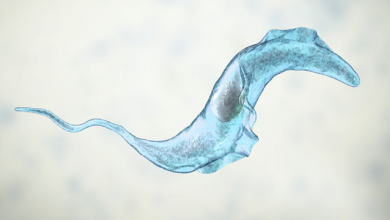Search results
Author(s):
Laurent Fauchier
Added:
3 years ago
Atrial fibrillation (AF) and heart failure (HF) with or without systolic dysfunction are common cardiac conditions that frequently coexist and share multiple risk factors. HF is a risk factor for AF and AF is a risk factor for HF. Recent studies have focused on the prognostic nature of AF and HF with systolic dysfunction and the questionable use of digoxin and beta-blocker therapy when these…
View more
Foreword
Author(s):
Andrew JS Coats
,
Giuseppe Rosano
Added:
3 years ago
Article
Author(s):
Reinaldo B Bestetti
Added:
3 years ago
More than a century after its discovery, Chagas disease still is a major health problem in Latin America, with 5.7 million people in 21 countries being affected by it.1 Moreover, about 70 million people are at risk of acquiring the illness.1 Cases of Chagas disease are now found globally; there are more than 400,000 immigrants with this disease living in Europe (mainly in Spain, Italy and France)…
View more
Author(s):
Laura Kearney
,
Paul Wright
,
Sadeer Fhadil
,
et al
Added:
3 years ago
Postpartum cardiomyopathy (PPCM) is a diagnosis of exclusion, where patients present with heart failure secondary to left ventricular (LV) systolic dysfunction towards the end of pregnancy or in the months following delivery, with no other cause of heart failure identified.1 PPCM is relatively uncommon, affecting between one in 5,000 and one in 10,000 births;2 it is thought to be more prevalent…
View more
Author(s):
Mark IM Noble
Added:
3 years ago
The simplicity of the concept of contractility is illustrated in Figure 1, which is the case for a strip of muscle connected to a force transducer. If one records the force of a contraction, and then measures it again at a longer length, the force is found to be higher. If by making other interventions, such as increasing the calcium ion (Ca2+) concentration of the extracellular fluid, and the…
View more
Author(s):
Ivan Milinkovic
,
Marija Polovina
,
Andrew JS Coats
,
et al
Added:
1 year ago
Author(s):
Bao Tran
,
Gregg C Fonarow
Added:
3 years ago
Heart failure (HF) remains a major public health problem resulting in substantial morbidity, mortality and healthcare expenditures globally. The European Society of Cardiology (ESC) 2012 Guidelines for the Diagnosis and Treatment of Acute and Chronic Heart Failure and the American College of Cardiology Foundation (ACCF)/American Heart Association (AHA) 2013 Guideline for the Management of Heart…
View more
Author(s):
Pierpaolo Pellicori
,
Kuldeep Kaur
,
Andrew L Clark
Added:
3 years ago
Heart failure (HF) is one of the most common reasons for admission to hospital. It is associated with long in-patient stays, and has a high in-hospital and post-discharge morbidity and mortality, whether left ventricular ejection fraction (LVEF) is reduced (HFREF) or normal (HeFNEF).1,2 Congestion, or fluid overload, is a classic clinical feature of patients presenting with HF. In some patients,…
View more
Author(s):
Attilio Iacovoni
,
Emilia D’Elia
,
Mauro Gori
,
et al
Added:
3 years ago
Heart failure (HF) is a pandemic, chronic degenerative disease estimated to affect 38 million people worldwide, a number expected to increase with the ageing of the population.1 As a syndrome, it is associated with high mortality and morbidity, and consistently requires increasing resources. HF is the most frequent cause of hospitalisation in patients aged over 65 years, and hospitalised patients…
View more
Author(s):
Otilia Țica
,
Waseem Khamboo
,
Dipak Kotecha
Added:
1 year ago














